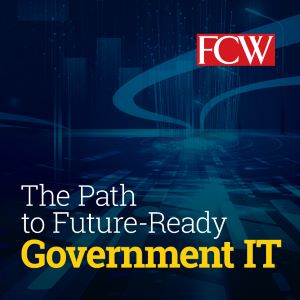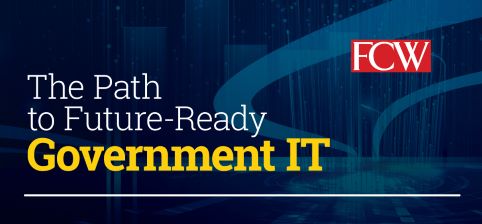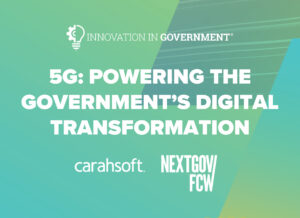The COVID-19 pandemic has made it clear that agencies need future-ready technology systems and strategies that enable them to tackle current challenges while incorporating the ability to innovate quickly during future crises. Such strategies rely on certain core components: multi-cloud management, modern app development, 5G, artificial intelligence and new approaches to security. They lead to app development teams that have an unwavering focus on delivering mission value; fine-grained control across public, private and hybrid clouds; better protection of critical assets; and a productive, engaged workforce. Future-ready strategies are fast, scalable and cost-effective – the question is how to build them. By 2023 over 1 billion users are expected to be utilizing 5G, and 36 percent of government CIOs plan to invest more on AI in 2021 than they did in 2020. The Presidential Administration’s May 12 Executive Order on Improving the Nation’s Cybersecurity calls on agency leaders to develop plans to implement zero trust architecture. Many agencies are developing apps for the first time, or reassessing their app development approach. There’s no one way to be future-ready, but there are many considerations; read the latest insights from industry thought leaders in Carahsoft’s Innovation in Government® report on future-ready tech.
Why 5G is More Than a Telecom Revolution
“Agencies need to generate, analyze and manage massive amounts of data to achieve success on a diverse set of mission goals. The increase in bandwidth that comes with 5G widens the data pipe between devices and platforms to give agencies a faster way to move data and therefore harvest even more valuable insights for decision-making. 5G is not just about increasing bandwidth. It is also about creating new applications and enabling new services that can help agencies maximize the value of digital transformation. That’s because 5G is an enabler and catalyst for other crucial and transformative technologies, such as augmented reality, virtual reality, industrial automation, real-time sensor-based telemetry, drone control, artificial intelligence and automation.”
Read more insights from VMware’s Senior Director, Phil Kippen, and Dell Technologies’ Lead Systems Architect, Chris Thomas.
 Beyond Tools: A More Holistic Approach to Security
Beyond Tools: A More Holistic Approach to Security
“To understand the challenge of a given threat or adversary, agencies need to understand the context in which they will be interacting with it. The security team must partner with the infrastructure, applications, networking, end-user and storage teams to gain those insights. Together, those experts can focus on the interactions between systems and define a view of “normal” activity. Then the agency’s IT ecosystem can react to any deviation from that standard. Fortunately, agencies don’t need to start from scratch. Many are adopting an end-to-end security model that leverages security capabilities intrinsic to the systems and solutions that are already in place to create a vision for secure agency operations. This approach allows them to connect context across environments to build a layer of control and intelligence to respond to and remediate threats. Zero trust is a key component of end-to-end security. Zero trust requires organizations to embrace the notion that their systems are already in a state of compromise.”
Read more insights from VMware’s Director of Government, Education and Healthcare Solutions Architecture, Henry Fleischmann.
How to Streamline Modern App Development
“In the commercial world, investment in modern apps is a business imperative, and the companies that focus on it attract the technology world’s best talent. In the government, modern app development is a mission imperative that encourages the use of common tools, saves time and money, enhances cybersecurity, and improves the citizen experience. Users of government software — whether they are citizens or agency employees — can become demoralized by the outmoded and onerous legacy systems that perform business or mission functions, especially when software makes every other facet of our lives easier. During my military career, I saw air operations conducted with pen and paper because manual processes were faster than using legacy software, and I know of many young military members whose decision to leave the service was heavily influenced by the lack of software capabilities on the job.”
Read more insights from VMware’s Federal Strategist, Jeremiah Sanders.
The Importance of a MultiCloud Strategy
“To control costs, improve operational efficiency and make the most of the technology, agencies should take a more holistic approach to managing clouds. Thinking holistically prompts agencies to proactively consider and plan for multiple clouds while reducing the risk and cost of managing, securing and governing them — rather than only developing skills and processes for a single cloud provider. Management tools and practices formed from a multi-cloud perspective allow agencies to focus on the entire life cycle of cloud operations. As a result, they can efficiently and effectively set up, deploy, manage and optimally run infrastructure resources and application services anywhere.”
Read more insights from VMware’s Vice President of Architecture and Engineering, Government, Education and Healthcare Sector, Ranil Dassanayaka.
Bringing AI-Powered Tech to Government
“Artificial intelligence is one of the largest technology transformations we’ve ever seen. As it becomes more widespread, AI will have an impact equivalent to that of the internet. The technology can help with the digital transformation of every facet of government. With the assistance of AI, agencies can rethink and enhance the customer experience by using a number of tools, such as natural language processing and predictive recommendations. In terms of cybersecurity, AI can quickly sift through massive amounts of data, allowing intelligence agencies to react to threats and attacks in real time. It can also improve medical care and public health, and help the government better predict the weather, understand long-range climate trends, and detect and quickly respond to natural disasters.”
Read more insights from VMware’s Director of Product Marketing, Sheldon D’Paiva, and NVIDIA’s Director of Product Marketing, Erik Pounds.
Download the full Innovation in Government® report for more insights from these government tech modernization thought leaders and additional industry research from FCW.







